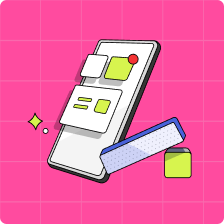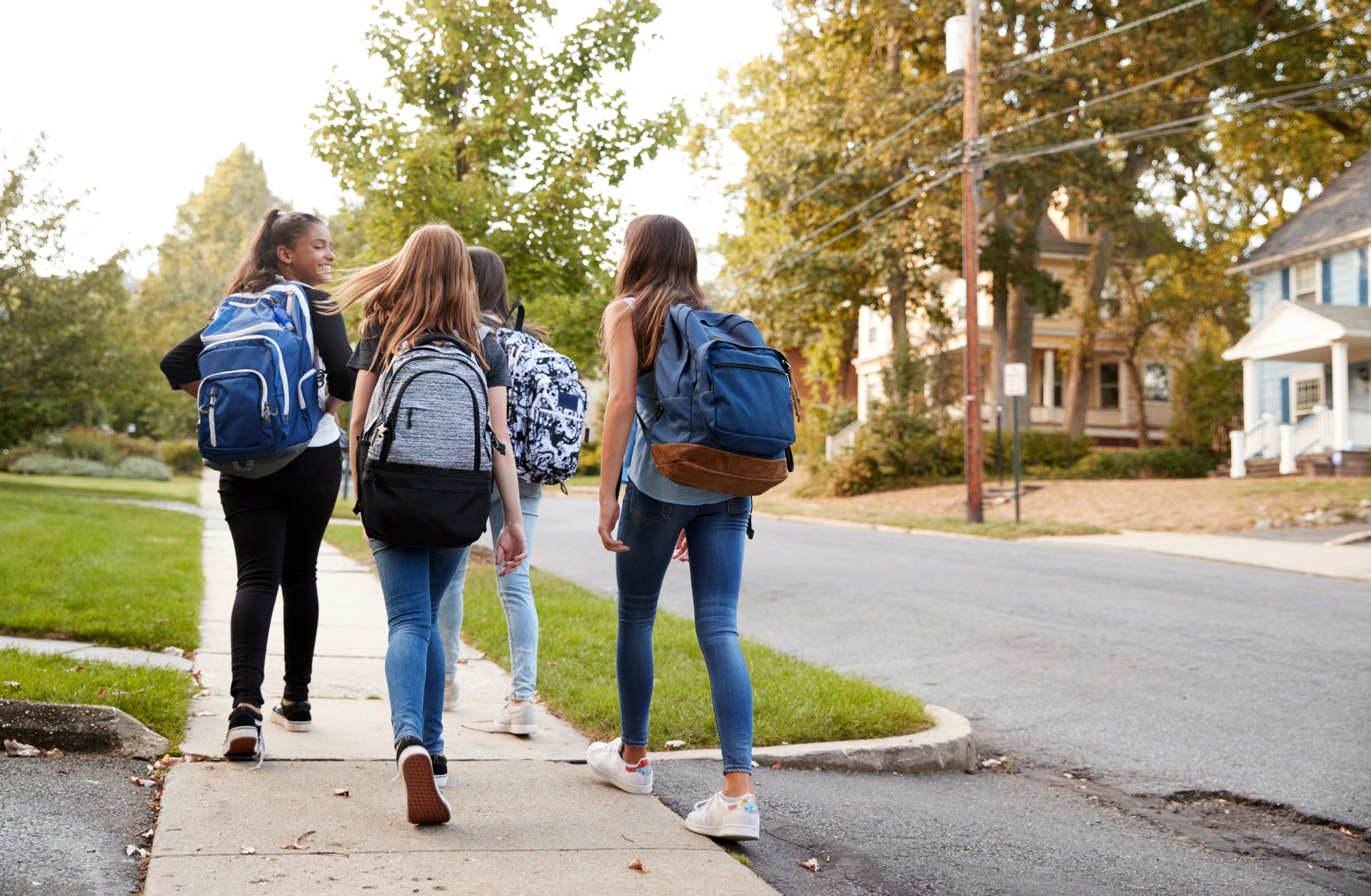After the long summer break, many parents consider back-to-school as “the most wonderful time of the year.” However, the upcoming 2021-2022 school year is unlike any other. Parents and kids are unsure of how the school year will play out. Are kids heading back into the classroom, will there be digital learning – or a combination of both?
Mydoh is all about learning. With that in mind, we rounded up some resources to keep you informed on back-to-school and the changes parents, and kids across Canada might expect.
Changes to the upcoming school year in Canada due to Coronavirus
We’ve broken down what back-to-school could look like in your province when they reopen in September. Keep in mind that local boards and individual school protocols and open dates will vary by region. The below information is accurate at the time of publishing, and parents are encouraged to check their children’s school for the most up-to-date and accurate information for their own situations.
Alberta
Alberta plans to fully reopen schools for all students. Additional measures include enhanced cleaning, reorganizing classrooms to increase space between desks, hand hygiene, and access to hand sanitizer. Masks will be mandatory for kids in Grades 4 to 12, where physical distancing can’t be maintained. Mask use for children in kindergarten to Grade 3 will be optional. Students who take the school bus will be expected to sit in the same seat each day.
British Columbia
The first day for kids in B.C. has been pushed back to the second week of September, giving teachers and staff two days to prepare for the new school year. Students will be sorted into learning groups of no more than 60 people, including teachers and educational assistants. Learning groups will remain together throughout the semester. The province’s back-to-school plan includes enhanced health and safety measures, including a health policy for students and staff. The province will also provide every student with two masks when they return to school, although masks are not mandatory for elementary school students in B.C.
For more information, visit B.C.’s back-to-school plan.
Manitoba
School is set to go back for kids in Manitoba in September for full days. However, some high school students may also have part-time distance learning. Masks will be mandatory for students taking the bus, and while the province isn’t mandating the use of masks in the classroom, it strongly recommends kids in Grades 5 to 12 wear a mask. Schools will also be staggering breaks and organizing students into groups of no more than 75 as an additional safety precaution.
New Brunswick
Students in kindergarten to Grade 8 will return to school full time, while high school students can expect a combination of in-class and distance learning. In order to keep students safe, the province has announced plans to reduce group sizes for kids in kindergarten to Grade 5. Each student will be required to bring a face mask to school each day, but they are not mandatory in the classroom. Students in Grades 6 to 12 will be required to wear a face mask in common areas, such as hallways and on the bus, while younger students are encouraged to follow suit. Arrival times to school, as well as breaks, will also be staggered. On school buses, students will be required to sit in the same seat every day, and the bus will be equipped with a curtain to separate students from the driver.
For more information, visit Return to school: Guide for parents and the public.
Newfoundland and Labrador
The province has created three back-to-school plans, depending on the risk of infection, including in-class learning, remote learning, or a combination of the two. Schools will aim to physically distance students, and there will be a “no sharing” policy for school supplies between students. Currently, the wearing of masks is not mandatory for any students, though students who choose to won’t be stigmatized.
For more information, visit the province’s K-12 education reentry plan.
Northwest Territories
The territory is planning to offer in-person education where possible, with the possibility of teaching children in shifts if there isn’t space to properly distance as well as remote learning. Students in kindergarten to Grade 6 will be assigned classroom “bubbles,” while older students will be asked to socially distance. Masks will be required for all students where social distancing can’t be practiced.
For more information, visit the province’s back-to-school plan.
Nova Scotia
School returns full time for kids in Nova Scotia in September, with measures to physically distance students. Students in Grades 4 to 12 will be required to wear masks unless they are two metres apart and facing the same direction, and the province will provide students with two free cloth masks. Masks will also be required on school buses. The province has also announced that if a further outbreak occurs during the school year, classes will be reduced, and students will move to a blended learning model of in-class and at home, as well as remote learning for older students.
For more information, visit Nova Scotia’s back-to-school plan.
Ontario
Elementary schools across Ontario will reopen near the beginning of September, five days a week for in-class learning, and children will be grouped into cohorts. Meanwhile, most secondary school students may be required to adapt to part-time distance learning and part-time school attendance to keep class numbers low. Masks will be required to be worn by all students from Grades 4 to 12 at school and on the bus. Parents also have the option to enroll their child in remote learning, rather than attend the classroom.
For more information, visit Ontario’s plan for the safe reopening of schools in September.
Prince Edward Island
When PEI students return to school in September, they’ll be organized into cohorts to limit contact with others. Classrooms will be reconfigured to allow for social distancing. While masks won’t be mandatory, the province strongly encourages their use for students in Grades 7 to 12 and recommends kids in kindergarten through Grade 6 also wear masks when they can’t physically distance. Similarly, masks aren’t mandatory on school buses but are recommended.
Quebec
All students are expected to return back to school in September. Students who are at high risk of complications from COVID-19 (or live with someone who is) can request to be exempt and learn remotely. Students will be in a bubble to limit interaction with others and will be expected to physically distance from any other students or teachers who are not in their bubble. Masks are required for students in Grades 5 and up in common areas in the school and on the bus, while younger children are encouraged, but not required, to wear a mask.
Saskatchewan
The start of school has been pushed in September, and students will be assigned to groups to limit interaction with other students. In addition, start times and breaks may be staggered to allow for physical distancing. While the Chief Medical Officer has advised students in Grades 4 to 12 wear masks in common areas and on buses, it will be up to individual school boards to set a policy on mask-wearing. Students taking transit will be assigned seating.
For more information, visit Saskatchewan’s safe school plans.
Yukon
Students in rural parts of the Yukon will return to school full time, while high school students in Grades 10 to 12 will split their learning between the classroom and remote instruction. Class sizes may also be reduced. Wearing masks will not be required, but will be up to the individual.
For more information, visit Yukon’s planning for the 2020-21 school year.
Keeping kids safe at school
Binders, coloured markers, a new lunchbox – and a face mask? Back-to-school shopping will be a little different for parents this school year. Many provinces are making masks mandatory for kids in Grades 4 and up, while younger children are also encouraged to wear a mask, as it’ll help stop the spread of the virus. Canadian government guidelines recommend a mask made of at least two layers of tightly-woven fabric – such as cotton or linen. It’s important their mask covers your child’s mouth and nose.
If your child doesn’t already own a washable mask, there are plenty of options available in-store and online. Etsy sells a wide range of masks for kids, from gamer designs to donuts to unicorns. Masks are available from a wide range of stores.
Another way to help prepare your child to return to the classroom in September is to talk to them about the changes in safety protocols ahead of time. Encourage physical distancing and frequent handwashing for at least 20 seconds (about the amount of time it takes to sing “Happy Birthday” twice through). Pack hand sanitizer containing at least 60% alcohol in their school bag and encourage kids to apply a dime-sized amount only and rub hands until completely dry, especially after sneezing or coughing. If your child is sick, they should stay at home.
Read more about the best daily routines for kids going back to school
How to talk to your kids about COVID-19
Understandably, some parents are nervous about sending their children back to school in September. Or perhaps you feel comfortable with the decision, but your child has questions about their health and safety. A disease outbreak of his magnitude is difficult for kids to comprehend. The Canadian Pediatric Society recommends you:
- Reassure your child that doctors and scientific experts around the world are working hard to keep them safe.
- Help your kids to understand, verbalize, and organize their own feelings around the pandemic.
- Find out what they know and correct any misinformation they may have about the virus.
- Be honest but positive. Reinforce that they are unlikely to get sick, but that it is still important that they do their part to keep themselves and others.
No matter what you decide/are comfortable with for this upcoming school year, Mydoh will continue to be here, helping teach kids about money and keeping them busy in those off-school hours. Sign up for Mydoh today and begin teaching your kids about financial literacy today. Whether they’re at school part-time, full time, or learning remotely, they’ll be able to earn money by doing chores or completing tasks and learn how to spend it wisely – and safely.
Download Mydoh today to learn more.
This article offers general information only and is not intended as legal, financial or other professional advice. A professional advisor should be consulted regarding your specific situation. While the information presented is believed to be factual and current, its accuracy is not guaranteed and it should not be regarded as a complete analysis of the subjects discussed. All expressions of opinion reflect the judgment of the author(s) as of the date of publication and are subject to change. No endorsement of any third parties or their advice, opinions, information, products or services is expressly given or implied by Royal Bank of Canada or its affiliates.







